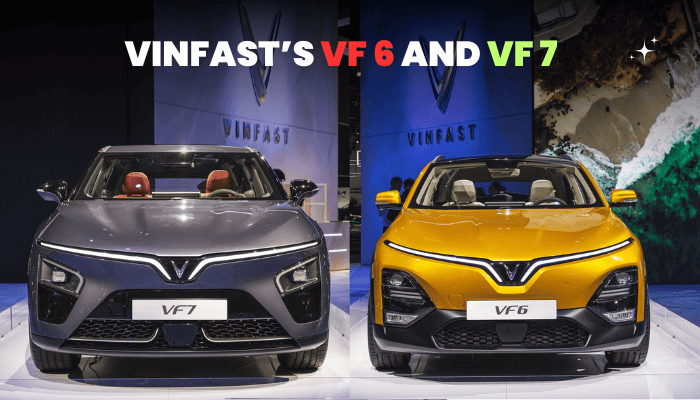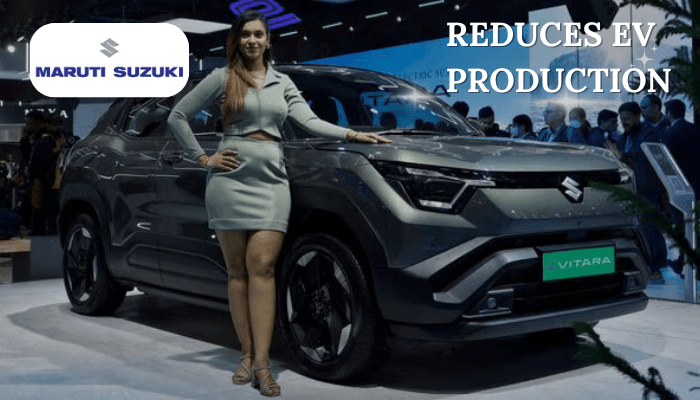The electric vehicle (EV) industry in India is changing fast. As more people look for clean and smart transportation, EVs are becoming a popular choice. You’ve probably seen models from Tata, Mahindra, and MG on the road already. But now, a new name is entering the market — VinFast, an electric vehicle company from Vietnam.
VinFast plans to bring its VF 6 and VF 7 electric SUVs to India, with local production set to begin in Tamil Nadu by June 2025. They’ve already made headlines around the world, but now the real test is here: Can they beat Indian EVs?
Let’s explore what VinFast offers and whether they can compete with well-known Indian models.
What Are VF 6 and VF 7?
Before we compare, let’s understand the two vehicles.
The VinFast VF 6 is a compact SUV. It’s made for city driving and small families. It’s stylish and smart, with features that appeal to younger buyers and first-time EV users.
The VinFast VF 7, on the other hand, is a mid-size SUV. It offers more space, more features, and stronger performance. It’s designed for buyers who want something premium but still practical.
Performance and Battery Range

VinFast VF 6
- Battery: 59.6 kWh
- Power: 178 bhp (Eco) / 204 bhp (Plus)
- Torque: 250–310 Nm
- Range: Up to 399 km (WLTP certified)
- Charging: Fast charging supported (20% to 80% in 30 minutes)
- Drive Type: Front-wheel drive

VinFast VF 7
- Battery: 75.3 kWh
- Power: 204 bhp (Eco) / 354 bhp (Plus AWD)
- Torque: 310–500 Nm
- Range: Up to 450 km
- Drive Type: Front-wheel (Eco), All-wheel (Plus)
- 0–100 km/h: As quick as 5.8 seconds (AWD version)
Compared to Indian EVs like the Tata Nexon EV, Mahindra XUV400, and MG ZS EV, the VinFast cars have higher power output and better acceleration. For example, the VF 7 AWD offers more torque and quicker pick-up than any of its Indian competitors.
So, if you’re someone who enjoys a powerful driving experience, the VF 7 might be a great fit.
Features That Stand Out
VinFast isn’t just offering power. Their cars come with smart features and comfort-focused design that can challenge even the most advanced Indian EVs.
Key Interior and Tech Features
- 12.9-inch touchscreen infotainment
- Google apps and voice assistant
- Wireless Android Auto and Apple CarPlay
- Over-the-air (OTA) software updates
- 8-way power-adjustable driver seat
- Heated and ventilated front seats
- Dual-zone climate control
- Ambient lighting
- Panoramic sunroof (in VF 7)
Safety Features
- Up to 7 airbags
- 360-degree camera
- Level 2 Advanced Driver Assistance Systems (ADAS):
- Adaptive cruise control
- Lane-keeping assist
- Emergency braking
Practical Features
- Remote functions through a mobile app
- Keyless entry and rain-sensing wipers
- Boot space: 423 litres (VF 6)
These features are often available only in the top-end models of Indian EVs. But VinFast plans to offer most of them in its standard variants. That’s a big plus for buyers looking for value and quality together.
Spacious and Stylish
VinFast understands that Indian families care about comfort and space. The VF 6 is compact and city-friendly but still manages to feel roomy inside. It’s perfect if you live in crowded cities and want a small SUV with enough boot space and good visibility.
The VF 7 is more luxurious. It has a wheelbase of 2,840 mm, giving you more legroom, especially in the back seat. The reclining rear seats and flat floor design also make long trips more comfortable.
Both SUVs have a futuristic design with bold lines and modern interiors. They look and feel more international than many Indian competitors.
What About the Price?
Now comes one of the most important questions: Can you afford it?
- VF 6: Expected to be priced between ₹18 lakh and ₹25 lakh
- VF 7: Likely to cost between ₹40 lakh and ₹50 lakh
The VF 6 will compete directly with the Tata Nexon EV and Mahindra XUV400. On the other hand, the VF 7 will go against premium EVs like the MG ZS EV and Hyundai Kona Electric.
Yes, the VF 7 is more expensive than most Indian EVs. But it also offers more — better power, more features, and a premium feel.
Made in India, Made for India
VinFast is planning to assemble these cars locally in Tamil Nadu. That’s a smart move.
Here’s how it helps you:
- Lower taxes and import duties
- More affordable pricing in the future
- Faster delivery and easier servicing
- Possibility of local spare parts
- Creates trust and brand value among Indian customers
If they continue investing in Vinfast in India, we could see even better pricing and faster customer support.
What Could Hold Them Back?
Of course, no brand is perfect, and VinFast will face some challenges.
Possible Issues:
- New to India – Many people haven’t heard of the brand yet
- Limited service network – Unlike Tata or Mahindra, they don’t have many service centers yet
- VF 7 pricing – Might be too high for some buyers, even with all its features
- Competition – Indian brands already have customer trust and dealer reach
VinFast will need to work hard on marketing, service, and customer care to win Indian hearts.
Final Thoughts
So, can VinFast’s VF 6 and VF 7 beat Indian EVs?
In many ways — yes.
They bring strong performance, stylish looks, spacious cabins, and tech-rich features. The VF 6 can become a serious rival to the Nexon EV and XUV400, while the VF 7 has the potential to set a new standard in the premium electric SUV category.
If VinFast gets its pricing, quality, and service right, then Indian buyers like you and me will have one more exciting option when choosing our next EV.
Stay updated with the latest car tips, news, and reviews — only on My Car Wisdom.
Raja Yadav, the content writer at My Car Wisdom, brings a unique voice and style to our blog. With a knack for storytelling and a keen eye for detail, Raja ensures that every piece of content is informative, engaging, and easy to understand. His focus is on delivering high-quality articles that cater to both novice car owners and seasoned automotive enthusiasts.




